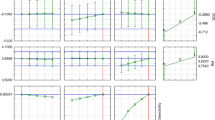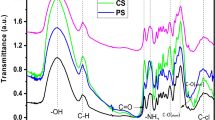Abstract
Copper is known as either an essential or toxic trace element in foods to living organisms at sufficient or excess intake levels, respectively. In this study, in vitro simulated gastric and intestinal digestion methods combined with n-octanol extraction and activated carbon adsorption were applied to Turkish hazelnuts (Corylus avellana L.) to evaluate the bioaccessibility of copper. Additionally, analytical fractionation procedures based on water, diethyl ether, n-hexane, and methanol extractions were applied to identify copper-related matrix structures. The macrochemical compositions of the samples were determined to be associated with the fractionation results. The total contents of copper in the samples, digests, and fractions were determined by inductively coupled plasma mass spectrometry after microwave-assisted digestion, and additional validation was performed using atomic absorption spectroscopy. The limits of detection and quantification were 0.016 and 0.053 mg kg−1, respectively. The bioaccessibility of copper was found to be in the range from 16 to 31 % for hazelnut samples. The recommended dietary allowance of copper for adults is 0.9 mg daily, and considering this value, 100 g of hazelnuts supplies 33–44 % of daily copper intake.
Similar content being viewed by others
References
Khouzam RB, Pohl P, Lobinski R (2011) Bioaccessibility of essential elements from white cheese, bread, fruit and vegetables. Talanta 86:425–428
Carbonaro M, Grant G, Mattera M, Aguzzi A, Pusztai A (2001) Investigation of the mechanisms affecting Cu and Fe bioavailability from legumes—role of seed protein and antinutritional (nonprotein) factors. Biol Trace Elem Res 84(1–3):181–196
Lei B, Chen L, Hao Y, Cao T, Zhang X, Yun Y, Fu J (2013) Trace elements in animal-based food from Shanghai markets and associated human daily intake and uptake estimation considering bioaccessibility. Ecotox Environ Safe 96:160–167
Versantvoort CHM, Oomen AG, de Kamp EV, Rompelberg CJM, Sips AJAM (2005) Applicability of an in vitro digestion model in assessing the bioaccessibility of mycotoxins from food. Food Chem Toxicol 43:31–40
de Lima ACS, Soares DJ, da Silva LMR, de Figueiredo RW, Sousa PHM, de Abreu Menezes E (2014) In vitro bioaccessibility of copper, iron, zinc and antioxidant compounds of whole cashew apple juice and cashew apple fibre (Anacardium occidentale L.) following simulated gastro-intestinal digestion. Food Chem 161:142–147
Dominguez-Gonzalez R, Romaris-Hortas V, Garcia-Sartal C, Moreda-Pineiro A, Barciela-Alonso MC, Bermejo-Barrera P (2010) Evaluation of an in vitro method to estimate trace elements bioavailability in edible seaweeds. Talanta 82:1668–1673
Kulkarni SD, Acharya R, Rajurkar NS, Reddy AVR (2007) Evaluation of bioaccessibility of some essential elements from wheatgrass (Triticum aestivum L.) by in vitro digestion method. Food Chem 103:681–688
Ruby MV, Schoof R, Brattin W, Goldade M, Post G, Harnois M, Mosby DE, Casteel SW, Berti W, Carpenter M, Edwards D, Cragin D, Chappell W (1999) Advances in evaluating the oral bioavailability of inorganics in soil for use in human health risk assessment. Environ SciTechnol 33(21):3697–3705
Intawongse M, Dean JR (2006) In-vitro testing for assessing oral bioaccessibility of trace metals in soil and food samples. TRAC-Trend Anal Chem 25(9):876–886
Alasalvar C, Amaral JS, Satır G, Shahidi F (2009) Lipid characteristics and essential minerals of native Turkish hazelnut varieties (Corylus avellana L.). Food Chem 113:919–925
Erdemir US, Gucer S (2014) Fractionation analysis of manganese in Turkish hazelnuts (Corylus avellana L.) by inductively coupled plasma−mass spectrometry. J Agric Food Chem 62(44):10792–10799. doi:10.1021/jf503145t
Ozenc N, Ozenc DB (2014) Effect of iron fertilization on nut traits and nutrient composition of ‘Tombul’ hazelnut (Corylus avellana L.) and its potential value for human nutrition. Acta Agr Scand B-S P 64(7):633–643
Delgado T, Malheiro R, Pereira JA, Ramalhosa E (2010) Hazelnut (Corylus avellana L.) kernels as a source of antioxidants and their potential in relation to other nuts. Ind Crops Prod 32:621–626
Ozenc N, Ozenc DB, Duyar O (2014) Nutritional composition of hazelnut (Corylus avellana L.) as influenced by basic fertilization. Acta Agr Scand B-S P 64(8):710–721
Alasalvar C, Shahidi F, Liyanapathirana CM, Ohshima T (2003) Turkish Tombul hazelnut (Corylus avellana L.) 1. Compositional characteristics. J Agric Food Chem 51:3790–3796
Pelvan E, Alasalvar C, Uzman S (2012) Effects of roasting on the antioxidant status and phenolic profiles of commercial Turkish hazelnut varieties (Corylus avellana L.). J Agr Food Chem 60:1218–1223
Altun M, Celik SE, Guclu K, Ozyurek M, Ercag E, Apak R (2013) Total antioxidant capacity and phenolic contents of Turkish hazelnut (Corylus Avellana L.) kernels and oils. J Food Biochem 37:53–61
Ghirardello D, Contessa C, Valentini N, Zeppa G, Rolle L, Gerbi V, Gerbi V (2013) Effect of storage conditions on chemical and physical characteristics of hazelnut (Corylus avellana L.). Postharvest Biol Tec 81:37–43
Montella R, Coisson JD, Travaglia F, Locatelli M, Bordiga M, Meyrand M, Barile D, Arlorio M (2013) Identification and characterisation of water and alkali soluble oligosaccharides from hazelnut skin (Corylus avellana L.). Food Chem 140:717–725
Ackurt F, Ozdemir M, Biringen G, Loker M (1999) Effects of geographical origin and variety on vitamin and mineral composition of hazelnut (Corylus avellana L.) varieties cultivated in Turkey. Food Chem 65:309–313
Ghiasvand AR, Ghaderi R, Kakanejadifard A (2004) Selective preconcentration of ultra trace copper(II) using octadecyl silica membrane disks modified by a recently synthesized glyoxime derivative. Talanta 62:287–292
Cattani I, Fragoulis G, Boccelli R, Capri E (2006) Copper bioavailability in the rhizosphere of maize (Zea mays L.) grown in two Italian soils. Chemosphere 64:1972–1979
Tapiero H, Townsend DM, Tew KD (2003) Trace elements in human physiology and pathology. Copper. Biomed Pharmacother 57:386–398
Römheld V (2012) Diagnosis of deficiency and toxicity of nutrients. In: Marschner P (ed) Marschner’s mineral nutrition of higher plants, 3rd edn. Academic Press, London, pp 299–312
Durukan I, Sahin CA, Satiroglu N, Bektas S (2011) Determination of iron and copper in food samples by flow injection cloud point extraction flame atomic absorption spectrometry. Microchem J 99:159–163
Nekouei F, Nekouei S (2014) Determination of copper, nickel and cobalt in water and food Samples by FAAS after separation and preconcentration using multiwalled carbon nanotubes modified by methyl-(2-pyridyl) ketone oxime. Indian Journal of Scientific Res 8(1):138–145
Fraga CG (2005) Relevance, essentiality and toxicity of trace elements in human health. Mol Aspects Med 26:235–244
Hanc A, Tlustos P, Szakova J, Habart J, Gondek K (2008) Direct and subsequent effect of compost and poultry manure on the bioavailability of cadmium and copper and their uptake by oat biomass. Plant Soil Environ 54(7):271–278
Wapnir RA (1998) Copper absorption and bioavailability. Am J Clin Nutr 67(5):1054S–1060S
Xiang G, Zhang Y, Jiang X, He L, Fan L, Zhao W (2010) Determination of trace copper in food samples by flame atomic absorption spectrometry after solid phase extraction on modified soybean hull. J Hazard Mater 179:521–525
Erdemir US, Gucer S (2014) Assessment of copper bioaccessibility in spinach (Spinacia oleracea L) leaves by chemical fractionation. Food Anal Method 7:994–1001
Erdemir US, Gucer S (2013) Fractionation analysis and bioaccessibility of manganese in spinach (Spinacia oleracea L.) leaves. Chem Spec Bioavailab 25:265–272
Liu CS, Glahn RP, Liu RH (2004) Assessment of carotenoid bioavailability of whole foods using a Caco-2 cell culture model coupled with an in vitro digestion. J Agr Food Chem 52:4330–4337
Ferraz TPL, Fiuza MC, dos Santos MLA, de Carvalhoa LP, Soares NM (2004) Comparison of six methods for the extraction of lipids from serum in terms of effectiveness and protein preservation. J Biochem Bioph Meth 58:187–193
Salgado PR, Ortiz SEM, Petruccelli S, Mauri AN (2011) Sunflower protein concentrates and isolates prepared from oil cakes have high water solubility and antioxidant capacity. J Am Oil Chem Soc 88:351–360
Dean JR, Ma R (2007) Approaches to assess the oral bioaccessibility of persistent organic pollutants: a critical review. Chemosphere 68:1399–1407
Hann S, Obinger C, Stingeder G, Paumann M, Furtmullerb PG, Koellensperger G (2006) Studying metal integration in native and recombinant copper proteins by hyphenated ICP-DRC-MS and ESI-TOF-MS capabilities and limitations of the complementary techniques. J Anal Atom Spectrom 21:1224–1231
Kannamkumarath SS, Wrobel K, Wrobel K, Vonderheide A, Caruso JA (2002) HPLC−ICP−MS determination of selenium distribution and speciation in different types of nut. Anal Bioanal Chem 373:454–460
Chrastny V, Komarek M (2009) Copper determination using ICP-MS with hexapole collision cell. Chem Pap 63(5):512–519
Fialho LL, Pereira CD, Nobrega JA (2011) Combination of cool plasma and collision-reaction interface for correction of polyatomic interferences on copper signals in inductively coupled plasma quadrupole mass spectrometry. Spectrochim Acta B 66:389–393
Gibson RS, Perlas L, Hotz C (2006) Improving the bioavailability of nutrients in plant foods at the household level. P Nutr Soc 65(2):160–168
Acknowledgments
Some of this work is a part of the Ph.D. thesis of the first author, which was accepted on July 10, 2013, by the Graduate School of Natural and Applied Sciences of Uludag University. This work was supported by the Commission of Scientific Research Projects of Uludag University [Project No F- 2008/25].
Conflict of Interest
The authors declare that they have no conflict of interest. This article does not contain any studies with human participants or animals performed by any of the authors.
Author information
Authors and Affiliations
Corresponding author
Rights and permissions
About this article
Cite this article
Erdemir, U.S., Gucer, S. Bioaccessibility of Copper in Turkish Hazelnuts (Corylus avellana L.) by Chemical Fractionation and In Vitro Methods. Biol Trace Elem Res 167, 146–154 (2015). https://doi.org/10.1007/s12011-015-0281-z
Received:
Accepted:
Published:
Issue Date:
DOI: https://doi.org/10.1007/s12011-015-0281-z




